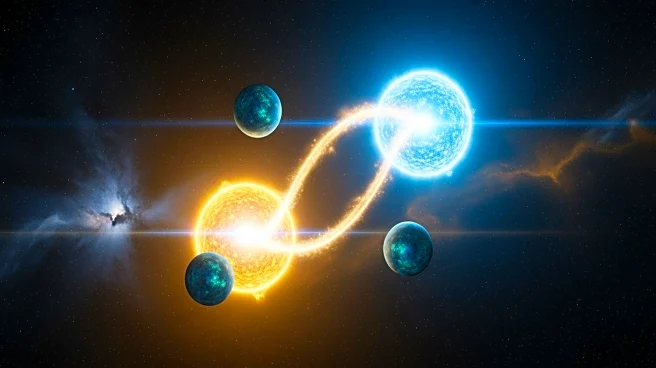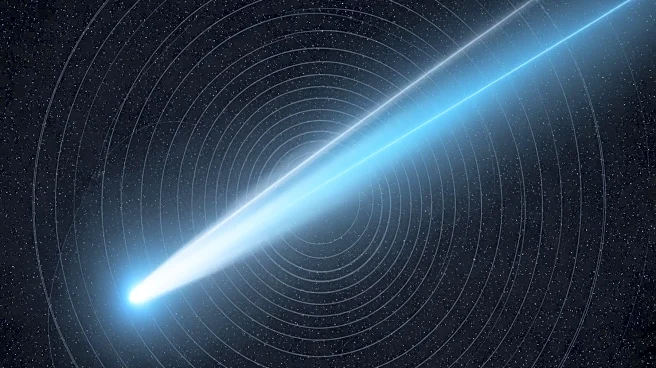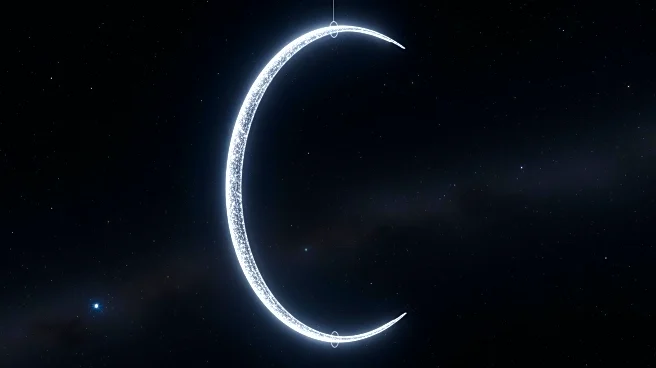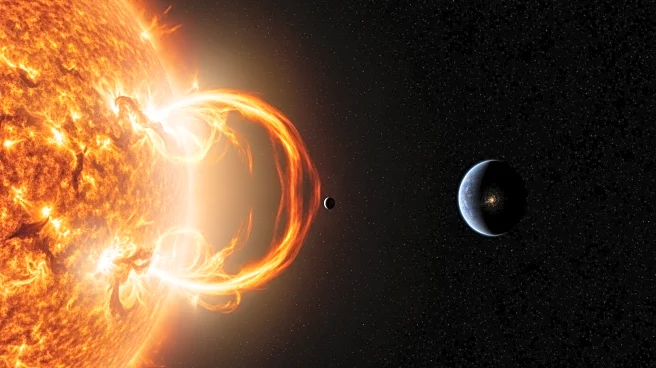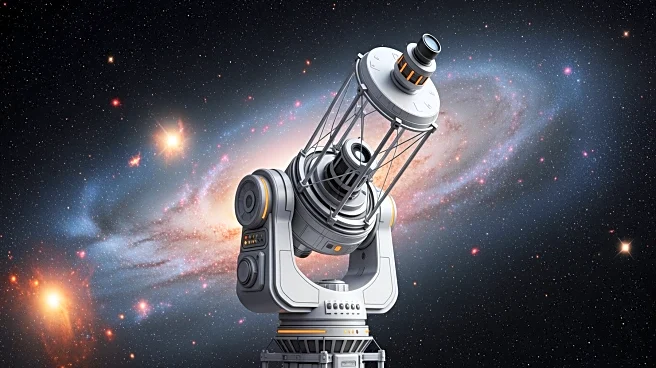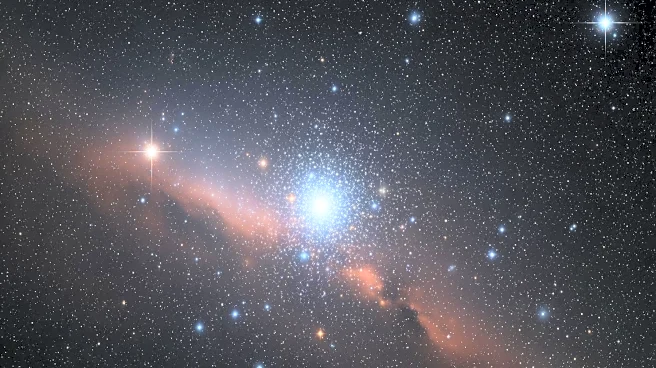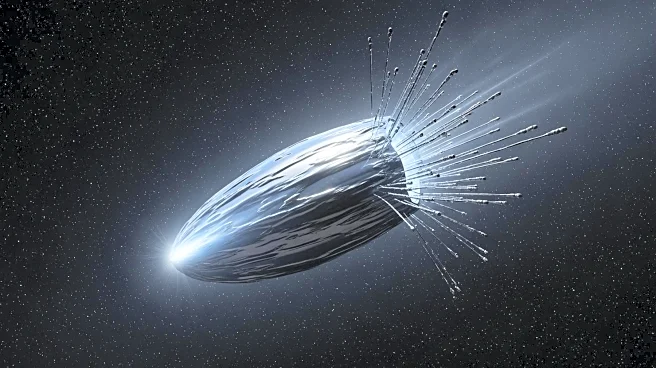What's Happening?
An international team of astronomers has confirmed the discovery of three Earth-sized planets within the binary stellar system TOI-2267, located approximately 190 light-years from Earth. This finding,
published in Astronomy & Astrophysics, provides new insights into how planets can form and remain stable in double-star systems, which were previously considered too chaotic for complex planetary development.
Why It's Important?
The discovery challenges long-held theories about planet formation in binary systems, suggesting that such environments can support the development of rocky worlds. This has significant implications for the search for habitable planets, as it expands the types of systems that might host life. The presence of Earth-sized planets in this system offers a unique opportunity to study the dynamics of multi-star systems and their potential to support life.
What's Next?
Future observations with the James Webb Space Telescope and next-generation ground-based observatories are expected to provide more details about the planets' masses, densities, and atmospheric compositions. These studies will help refine models of planet formation and stability in binary systems, potentially leading to new insights into the diversity of planetary architectures in our galaxy.
Beyond the Headlines
The discovery highlights the importance of combining data from space-based observatories like TESS with precise ground-based instruments such as SPECULOOS and TRAPPIST. This collaborative approach continues to expand our understanding of how planetary systems form and evolve across the galaxy.
